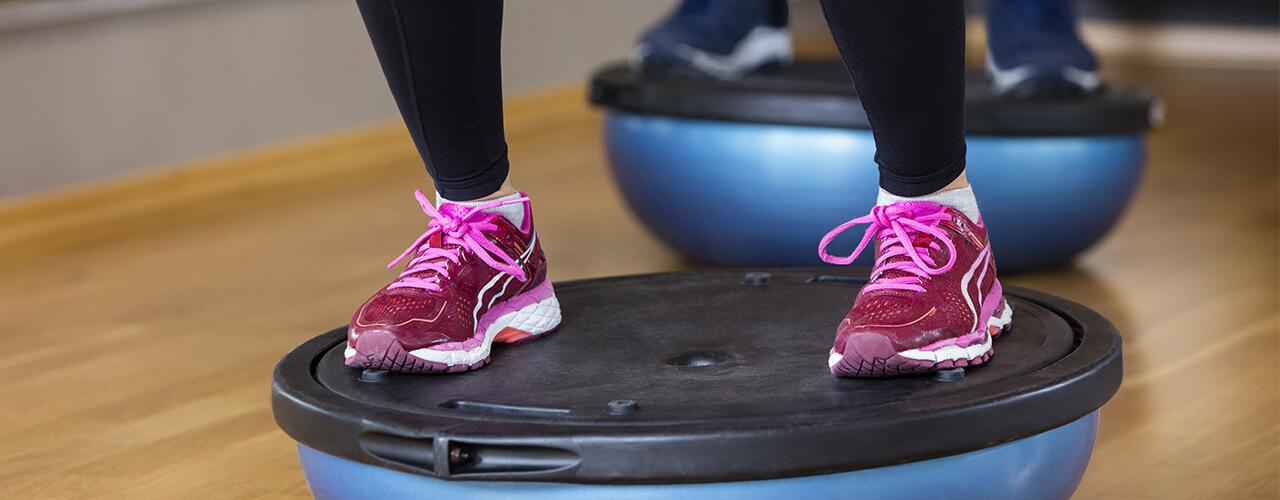Fall Prevention
Therapy Can Decrease Your Fall Risk
Do you ever experience an imbalance, dizziness, or unsteadiness that makes you feel as if at any given moment you might tip Fall Prevention? Have you suffered in the past because of a fall?
Are you afraid that you might be in danger of experiencing a fall-related injury? If so, you aren’t alone.
Falls are the leading cause of fatal and nonfatal accidents in older adults. Each year, one-third of the population above 65 experiences a fall. In 2013, over 2.5 million people were treated in emergency departments for nonfatal injuries, according to the Centers for Disease Control (CDC).
Most people don’t think about keeping their balance in shape until it is too late and they suffer a harsh Fall Prevention. The good news is that most falls can easily be prevented, simply by the regular exercising of your balance system.
Contact NYC Wellness today if you fear you’re at a risk of falling, so we can help you find out the source of your problem and handle it accordingly.
What are fall risks?
Some people have a higher risk of falling than others. Certain risk factors include:
- Alzheimer’s disease
- Parkinson’s disease
- Vertigo or dizziness
- Previous history of falls
- Living a sedentary life
- Being female
- Advanced age
- Overall poor health
- Fatigue
- Problems with walking or staying balanced
- Problems with vision
- Arthritis or alternative joint pain
- Previous stroke or heart attack
- Diabetes
- Heart disease
Our doctors will assess your medical history to determine how many risk factors toward falling you may have.
They will educate you on what these factors mean, as well as steps you can take to decrease your risk.
After this, they will perform a thorough physical evaluation to figure out what the best treatment plan for you will be.
Therapy for fall prevention
At NYC Wellness, your initial evaluation may consist of several parts to better determine what your most problematic factors are.
These may include thinking tests, resting heart rate checks, and evaluations of your gait, balance, range of motion, and strength.
Based on the results of this evaluation, our doctors will design a treatment plan for your specific needs.
These plans are aimed first and foremost at reducing your risk of falling, but they will also aid you in improving balance, strength, flexibility, endurance, and overall movement.
Some common forms of treatment include:
- Walking and moving programs. This part of your treatment plan is aimed at getting you back to your normal physical function when walking and/or moving. Our therapists may ask you to perform certain activities, such as walking in a circle or completing an obstacle course.
- Balance training. Balance is a large part of fall prevention, as lack of stability is one of the main reasons why falls occur. Our therapsts will design a balance training plan for you as part of your treatment and may ask you to perform certain balance-based activities, such as standing on one leg or holding your balance while performing a mentally-stimulating task (such as reciting the alphabet or reading a page from a book.)
- Strength training. Strength training is typically paired with your balance training. Our therapists will design a strength training plan for you, which will focus on specific muscle groups in need of improvement. The goal of this will be to improve your standing and walking balance, as well as your ability to recover from a loss of balance.
- Endurance training. Endurance training is all about working up to more advanced levels of the same form of treatment. Our therapists will provide you with an aerobic exercise program and will slowly add on time to those exercises as your endurance improves. For example, your endurance training may begin at 10-minute sessions and then may progress to 30-minute sessions.
- Pain management. If you are feeling pain anywhere, it will be one of the first things addressed in your treatment plan. Our therapists will want to make sure that your treatment is as comfortable as possible, so you will work together on relieving pain first, before continuing into any other forms of physical activity that may bring you discomfort.
Statistics supporting therapy for falls
A recently published systematic review by Cochrane, comprising over 100 randomized controlled trials, supports exercise interventions as an effective treatment method for patients with an increased risk of falling. The average age of patients in this review was 76, and 77% of the patients were women.
Fall risk was also reduced at 21-24%, depending on if treatments were done in individual or group settings. The risk of fall-related fractures was decreased by 27% and the number of falls that required medical attention was decreased by 39%.
Results concluded that those who participated in exercise interventions had a 23% decrease in falls as compared to the control group.
Concluding statements from the authors demonstrated how overall, “Exercise reduces both the rate of falls…and the number of people experiencing falls.”
Are you experiencing these symptoms?
If you have any of the following symptoms, therapy could greatly benefit you and help prevent the risk of falling.
It is important to note that you should also contact a doctor if you have any of the following symptoms:
- Difficulty standing up from a seated position or standing for prolonged periods of time
- Abnormal eye movements
- Arm or leg weakness
- Nausea or vomiting
- Double vision or tunnel vision
- Inability to focus or remain alert
- Dizziness or vertigo (“spinning” sensations, even when remaining still)
Ready to get started?
Are you ready to get back on your feet by improving your balance and decreasing your risk of sustaining a fall-related injury?
Contact NYC Wellness to request an appointment and get started today!


